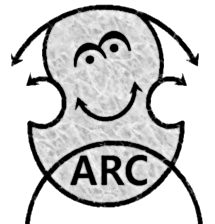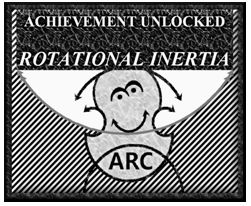The CLAY SMILE EXERCISE
All motions are performed with the HEEL OF YOUR RIGHT HAND.
The Heel of the Hand is the part of the palm closest to the wrist.

STEP ONE
Place a small ball of clay on a flat surface in front of you.
STEP TWO
Using only the heel of your hand, (no fingers or palm), flatten the clay slowly, while keeping your fingers in the air, loose and flexible.
STEP THREE
With the weight of your arm, roll the heel of your hand from side to side and stretch the clay horizontally, molding the clay into a smile shape.
STEP FOUR
Continue rolling the heel of your hand, (from inner to outer wrist) and mold the clay into a temporary frown shape.
STEP FIVE
Now slowly direct the heel of your hand and reshape the clay back into a smile shape.
Place a small ball of clay on a flat surface in front of you.
STEP TWO
Using only the heel of your hand, (no fingers or palm), flatten the clay slowly, while keeping your fingers in the air, loose and flexible.
STEP THREE
With the weight of your arm, roll the heel of your hand from side to side and stretch the clay horizontally, molding the clay into a smile shape.
STEP FOUR
Continue rolling the heel of your hand, (from inner to outer wrist) and mold the clay into a temporary frown shape.
STEP FIVE
Now slowly direct the heel of your hand and reshape the clay back into a smile shape.

Your Bow-Wrist just performed

You are now ready to apply these new motions and learn Bow-Wrist Tasks.


ROTATIONAL INERTIA.
Introducing the Bow Parts of the Bow The Stick Horse-Hair The Tip The Frog The Winding How the Bow Works
Rosin Preparing to Hold the Bow Stick Training Exercises Bowing Terminology Down-Bow Up-Bow
Bow-Hand Set-Up Finger Tasks and Functions The Thumb Meet ARC Finger Segments The Index-Finger
Bow-Hand Pronation The Center-Finger and Ring-Finger Bow-Hand Fulcrum Ring-Finger Propulsion Bass Bows
Pinky Bow-Tasks ‘Casting’ the Bow-Hand Bow-Wrist Tasks Rotational Inertia Arco Clay Smile Exercise Meet ANGLE
The Bow-Arm Box The Shoulder Arc Bow Contact-Point String Lanes Bow-Segment Mastery Bowing Exercises
Finding the Bow Contact-Point “Painting With Sound” Bowing Exercises Menu Bow Taps Bowing Traditions
Perform Down-Bows Perform Up-Bows The Art of the Bow-Change Articulations Staccato Legato
Mastery Checkpoint One Building Bow Control Bow Speed and Bow-Arm Motion Bow Planning and Distribution
Slow Moving Bow Strokes Individual Bow Segments Traveling the Bow Bowing Dynamics Mastery Checkpoint Two
Advanced Techniques Slurs and Articulations Slur Training Locating the Bow’s Balance Point Ricochet and Spiccato
Exploring Ricochet Ricochet Control Spiccato Training Spiccato Control Spiccato Brush Strokes
Multiple String Crossings Virtuosic Bow Strokes Arpeggio Bowing “Flying” Staccato Mastery Checkpoint Three
SCROLL’s List of Bow Strokes
Rosin Preparing to Hold the Bow Stick Training Exercises Bowing Terminology Down-Bow Up-Bow
Bow-Hand Set-Up Finger Tasks and Functions The Thumb Meet ARC Finger Segments The Index-Finger
Bow-Hand Pronation The Center-Finger and Ring-Finger Bow-Hand Fulcrum Ring-Finger Propulsion Bass Bows
Pinky Bow-Tasks ‘Casting’ the Bow-Hand Bow-Wrist Tasks Rotational Inertia Arco Clay Smile Exercise Meet ANGLE
The Bow-Arm Box The Shoulder Arc Bow Contact-Point String Lanes Bow-Segment Mastery Bowing Exercises
Finding the Bow Contact-Point “Painting With Sound” Bowing Exercises Menu Bow Taps Bowing Traditions
Perform Down-Bows Perform Up-Bows The Art of the Bow-Change Articulations Staccato Legato
Mastery Checkpoint One Building Bow Control Bow Speed and Bow-Arm Motion Bow Planning and Distribution
Slow Moving Bow Strokes Individual Bow Segments Traveling the Bow Bowing Dynamics Mastery Checkpoint Two
Advanced Techniques Slurs and Articulations Slur Training Locating the Bow’s Balance Point Ricochet and Spiccato
Exploring Ricochet Ricochet Control Spiccato Training Spiccato Control Spiccato Brush Strokes
Multiple String Crossings Virtuosic Bow Strokes Arpeggio Bowing “Flying” Staccato Mastery Checkpoint Three
SCROLL’s List of Bow Strokes



